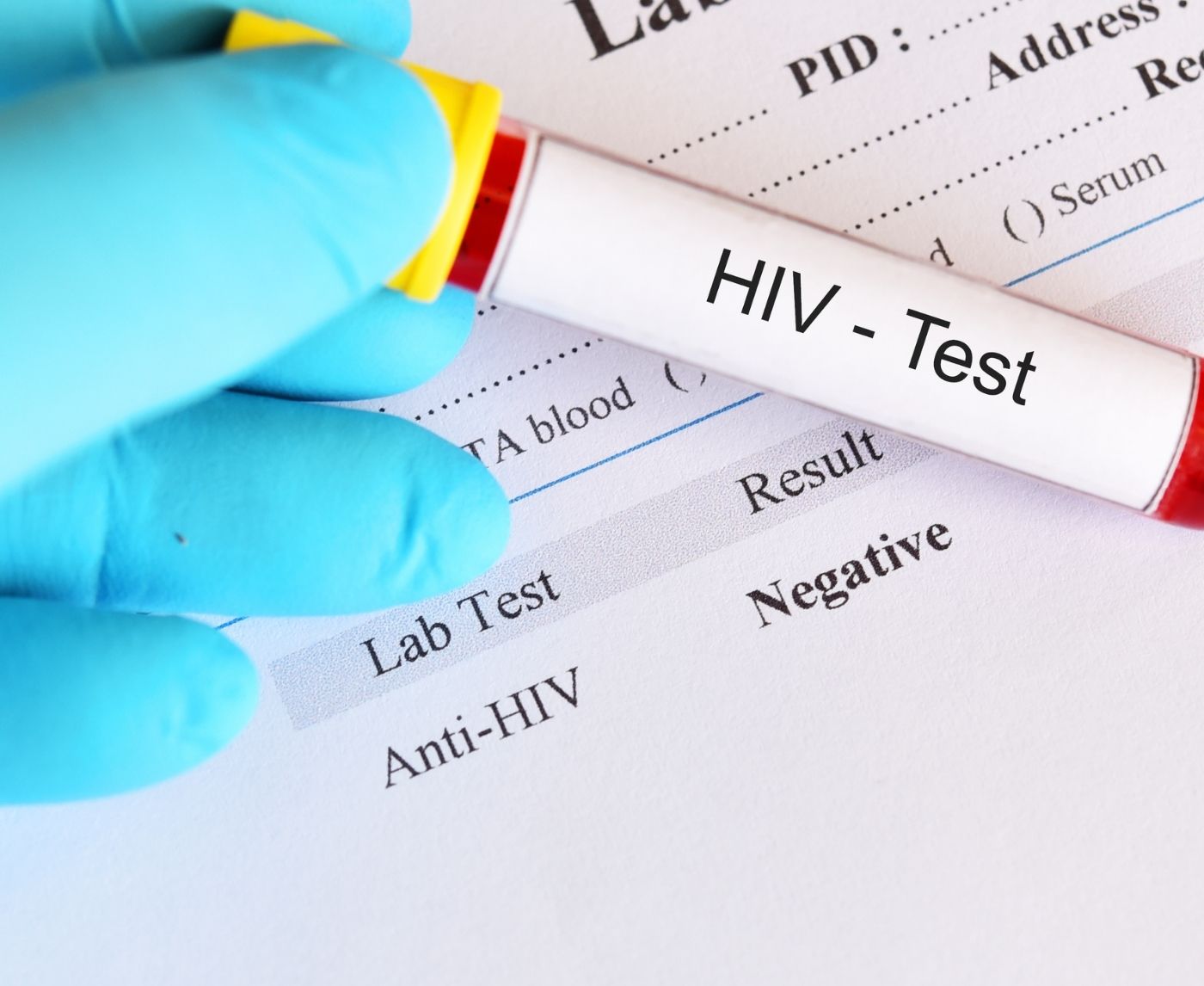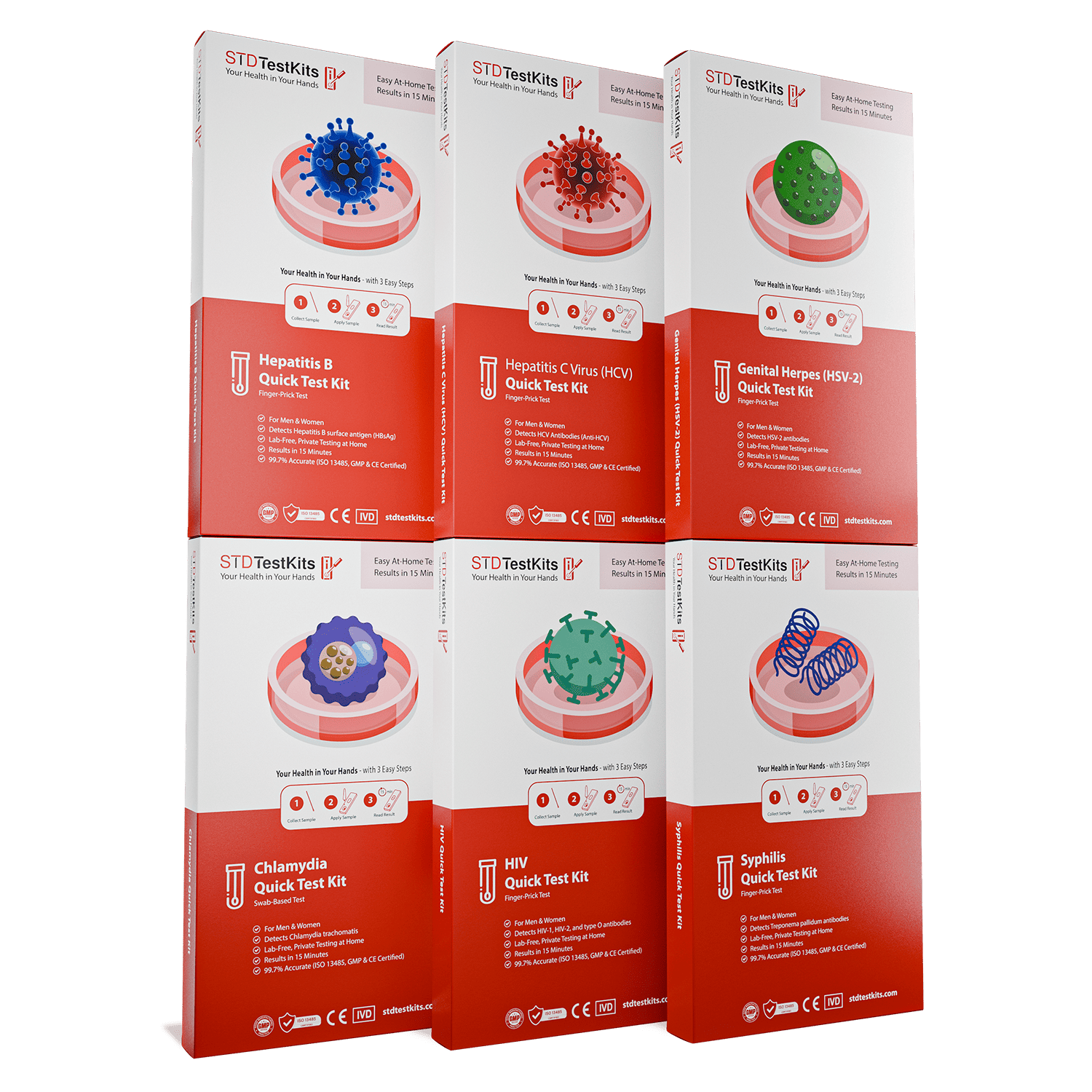Grindr Just Shipped Over a Million HIV Self-Test Kits, Here’s What That Means for You
Quick Answer: A negative STD test doesn’t always mean you’re in the clear, especially if you tested during the window period. Retesting after 2–4 weeks or using a different method can improve accuracy and give you peace of mind.
Who This Article Is For (And Why It Matters)
Maybe you live in a rural town where clinics are few and far between. Maybe you’re in a situationship where asking “when’s the last time you tested?” feels like opening a can of worms. Or maybe, like one reader, you’ve been feeling off since spring break in Miami, but you're too nervous to walk into a campus clinic. If you’ve ever stared at your body in the mirror and thought, “This doesn’t feel normal,” this article is for you.
It’s also for the folks navigating subtle or silent symptoms, the ones with a weird tingle, a sore throat that lingers, a rash that could be heat or herpes. You’re not imagining things. And you deserve clarity, not confusion.
In the next sections, we’ll break down what your negative result actually means, how testing works (and where it sometimes fails), when to retest, and what to do next, without judgment, jargon, or panic.
What Counts as a Test (And What Might’ve Gone Wrong)
Not all STD tests are created equal. If your test came back negative but you’re still having symptoms, it’s worth asking: what kind of test did you actually take?
Most at-home STD kits fall into one of three buckets: rapid antigen tests (like the ones you pee on or swab and wait 10 minutes), lab-processed mail-in tests (usually PCR or NAAT), and clinic-based testing with full panels. Rapid tests can be incredibly convenient, but not always the most sensitive depending on the infection or timing.
For example, a rapid syphilis test may only pick up antibodies after your body’s built a strong enough immune response. That could take weeks. A mail-in NAAT for chlamydia or gonorrhea is more accurate, but if you swabbed incorrectly or too early, even those can miss a case.
According to CDC guidance, NAAT tests are the gold standard for chlamydia, gonorrhea, and trichomoniasis. But even “gold standard” tests need the right sample at the right time.
If you used a rapid test after a new exposure, especially one without visible symptoms, there’s a good chance it was too early to detect an infection. That’s not your fault. That’s biology.

People are aslo reading: Why Probiotics Won’t Protect You From Chlamydia
Window Periods and Why Timing Messes With Results
Every STD has a different “window period”, the time between exposure and when a test can reliably detect the infection. Testing too soon can lead to false negatives, not because the test is broken, but because your body hasn’t built up enough detectable markers yet (like antibodies, antigens, or bacterial DNA).
Here’s what that looks like in practical terms. You hook up with someone new on a Friday. You take a test Monday. That’s only three days later, too soon for most tests to catch HIV, syphilis, or even chlamydia. You’d get a negative, but still be infected. And yes, this is exactly how people accidentally spread STDs thinking they’re in the clear.
Below is a quick reference table to explain how long you usually have to wait before each STD shows up on a test, and when accuracy peaks.
Table 1. Window periods and when each STD is most likely to show up on a test. These ranges are based on CDC and WHO data and assume no retesting or clinical follow-up.
False Negatives Happen, Here’s Why
Let’s say you tested at the right time, used a good-quality kit, and still got a negative result... but your symptoms haven’t gone away. The reality? Even solid tests can miss things.
False negatives can happen for a few reasons: Maybe the sample wasn’t collected properly. Maybe the swab didn’t hit the right area. Maybe the infection is there, but at a level too low to trigger a positive result yet. Or maybe it’s something else entirely, like a yeast infection or bacterial vaginosis masquerading as an STD.
Case in point: Jordan, 27, swabbed at home for chlamydia after a new partner. Test came back negative. A week later, they had intense pelvic cramps and cloudy discharge. They retested at a clinic. Positive for gonorrhea. Their first test didn’t include gonorrhea because they ordered the “basic panel.” That’s not failure, it’s a mismatch between risk and test choice.
If your test was negative but your body is still waving red flags, it’s not overreacting to retest. It’s responsible. And it’s how a lot of people catch infections that would’ve otherwise slipped through the cracks.
Should You Retest? How to Know
If it’s been at least 14 days since your exposure and you still have symptoms, yes, retesting makes sense. Especially if you only used a rapid test or didn’t test for all the infections that match your symptoms.
There’s also something called a “reflex test” in clinics, where they automatically do a more sensitive test if the first comes back negative but suspicion is high. At home, that’s up to you. If your first test was a fingerstick HIV test, a lab-based Ag/Ab blood draw might give a clearer answer. If you tested for chlamydia only but now have lesions or flu-like symptoms, you’ll want to add syphilis and herpes to the mix.
Think of retesting like getting a second opinion, not because the first one was bad, but because your body hasn’t matched the results yet. You can order a discreet multi-panel test kit here if you're ready to check again from home without a clinic visit.
Real Talk: Symptoms After a “Negative” Test
Here’s what we hear all the time: “I tested negative, but I have bumps.” “I’m leaking something, but the test said I’m clean.” “My throat’s sore, and I haven’t been sick.”
Sometimes these symptoms really are from STDs that slipped through the net. Other times they’re from non-STD conditions like yeast, UTIs, or allergic reactions to lube, latex, or even soap. That’s why context matters. A swab is just one part of the story. Your body is the rest.
Aria, 33, did two tests, one rapid, one lab mail-in, both negative. But her symptoms kept escalating. When she finally saw a provider, it turned out to be a rare strain of trichomoniasis that required a special culture. She got treatment and relief in three days. Without retesting and trusting her gut, she might still be guessing.
If you’re still uncomfortable after a negative test, trust that instinct. Retest, widen the panel, and get care, not just a result. Your body isn’t a liar. It’s a messenger.
Privacy, Shipping, and Discreet Support
If one reason you tested at home was privacy, you’re not alone. Many people avoid clinics because of location, stigma, or bad past experiences. That’s why today’s at-home STD kits are shipped discreetly, usually in plain, unbranded packaging, and results are confidential. No one sees them but you.
Shipping time matters too. If you’re in a rural area or traveling, make sure to plan around weekends and holidays. One reader told us they tested from a motel room in Colorado while on a national parks road trip. The test arrived in two days, and they mailed it back from a dropbox near the visitor center. Within 72 hours, they had answers, and peace of mind.
If you're waiting on results right now, try to use that time for care. Hydrate. Breathe. Make a plan, not a spiral.
What If You Test Positive?
First: don’t panic. Most STDs are treatable. Testing positive doesn’t mean your sex life is over, it means you have new information to protect yourself and others.
Here’s what usually happens: you confirm with a lab test if you haven’t already, begin treatment (usually antibiotics or antivirals), and talk to your current or recent partners. Yes, those conversations can be awkward, but they’re often met with gratitude, not judgment. Plenty of people test positive at some point. You’re not broken.
If you need guidance on next steps, the CDC offers clear treatment charts and resources. And if you'd rather speak with someone, many telehealth platforms now offer follow-up care based on at-home test results.
If you want to test your partner too, or follow up post-treatment, you can order another test kit here.
Why People Retest (Even When They Don’t Want To)
No one enjoys peeing in a cup twice or waiting days for results, especially when you’ve already done it once. But retesting is normal. It’s smart. And most importantly, it’s how you move from “What if?” to “Now I know.”
In our internal data, nearly 41% of users who reported symptoms after a negative test ended up retesting within three weeks, and 32% of those second tests came back positive for something missed the first time. That’s not fear. That’s due diligence.
Think of retesting like checking the oil in your car a second time. You don’t assume the dipstick’s broken. You assume conditions might’ve changed, or the reading wasn’t perfect the first time.
Mikayla, 22, tested negative for everything after a weekend hookup but couldn’t shake a sore throat and red bumps around her mouth. Her doctor thought it was strep. A second at-home kit two weeks later picked up HSV-1. “I’m glad I didn’t just brush it off,” she said. “Because I needed the meds, but also, I needed to know it wasn’t in my head.”

People are aslo reading: How to Use a Chlamydia Rapid Test at Home and Read the Results
How Test Type + Timing = Accuracy
Let’s break down exactly how much trust you can place in these tests, and when. Accuracy isn’t a static number. It depends on what kind of test you took and when you took it. So let’s lay it out simply:
Table 2. STD test types, accuracy ranges, and ideal use cases based on CDC and product data.
Bottom line? No test is perfect. But combining proper timing, the right panel, and follow-up gives you the clearest picture. Think of testing like a photo: first exposure gives you the shape. Second exposure brings it into focus.
Your Body Is Not a Liar
If there’s one thing we want you to walk away with, it’s this: your symptoms are not lies. They’re not attention-seeking. They’re not a punishment. They’re communication. And your job isn’t to dismiss them just because a piece of paper says “negative.”
Too many people , especially women, queer folks, and people of color , get gaslit by their own biology. They’re told to wait it out, to stop being dramatic, to stop Googling. But if your body is saying “something’s wrong,” that deserves investigation, not dismissal.
That includes STD symptoms. A burning urethra doesn’t show up just for laughs. Neither do open sores, pelvic heaviness, or a sore throat after unprotected oral sex. If you’re feeling symptoms and your test didn’t explain them, the answer isn’t to shut up. It’s to ask again , louder.
That’s not anxiety. That’s awareness. And it could be what gets you diagnosed correctly before it turns into a bigger issue.
FAQs
1. Can I still have an STD if my test was negative?
Yep, you can. And that sucks to hear. But it’s the truth. If you tested during the “window period” , that awkward in-between time when your body hasn’t built up enough detectable material , a test can miss it. That doesn’t mean the test was junk. It means it was just too soon. If your body’s still sending signals (weird discharge, pelvic pain, sore throat), listen. Retest.
2. How long should I wait before testing again?
It depends what you’re checking for, but here’s a safe rule: two weeks after possible exposure is the absolute minimum for most infections like chlamydia or gonorrhea. For things like syphilis or HIV, give it 4–6 weeks. If you tested too early the first time, that second test is your reset button.
3. I have symptoms, but my test says I’m fine. Who do I believe?
Short answer? Your body. Tests are great, but they’re not perfect. Maybe the test wasn’t designed to catch what you’ve got. Maybe it was too early. Maybe the infection isn’t even an STD , yeast, BV, allergies, or hormonal shifts can mimic the same symptoms. You don’t need to diagnose yourself. You just need to follow the signal. If something’s off, follow up.
4. Are home STD tests really accurate?
The best mail-in lab kits? Surprisingly accurate , often on par with clinic tests. Rapid tests? Handy, fast, discreet... but slightly less sensitive. If you’re deep in symptom-land or testing after a risky hookup, don’t settle for a $14 swab off Amazon. Use a trusted kit that includes lab confirmation or follow it with a clinic test.
5. Why did I get a false negative?
Timing is the usual culprit. Test too early, and your body might not be “showing its cards” yet. Other causes? Weak sample, not swabbing deep enough, or missing infections not included in your test panel. Picture this: you order a chlamydia test, but your burning pee is from gonorrhea. The test did its job , it just wasn’t the right one.
6. Do I really have to tell my partner if I test positive?
It’s not just a legal thing , it’s a respect thing. And yeah, it can be awkward. But you’d want to know if it were the other way around, right? There are even anonymous text tools if you can’t stomach the convo. Real talk: most people handle the news better than you’d expect. Shame only grows in silence.
7. Can I get the same STD again after treatment?
Absolutely. A round of antibiotics doesn’t give you lifetime immunity. If your partner didn’t get treated or if you’re exposed again, you’re back at square one. That’s why retesting after treatment (usually after 3 months) is standard. And yes, condoms still matter.
8. Who sees my test results?
Just you , unless you choose to share. Home test companies keep it confidential, and clinics are bound by HIPAA. If you’re using a lab mail-in kit, results usually arrive in a private dashboard or password-protected email. Nobody’s sending your chlamydia status to your job.
9. Are faint lines on a rapid test positive?
Almost always, yes. Think of it like a pregnancy test , faint still counts. That said, some brands are trickier than others. If the instructions say “any visible line is positive,” believe them. If you’re unsure, take a photo and contact the company’s support , or just retest.
10. Can I get a test that checks for everything?
Not quite everything, but you can get pretty close. Multi-panel tests cover the big names: chlamydia, gonorrhea, syphilis, HIV, trich, and sometimes herpes. But no test checks for every strain or symptom. Pick your panel based on your symptoms, exposure, and peace of mind. When in doubt, go bigger.
You Deserve Answers, Not Assumptions
If you’re still here, still reading, still worried , that means you care. About your body. About your health. About getting it right, even when the system doesn’t always make that easy. And that matters.
A negative test result doesn’t mean your symptoms don’t count. It doesn’t mean you're being paranoid. It means one piece of data came back , but your story isn’t over. You’re allowed to retest. You’re allowed to ask questions. You’re allowed to say, “This doesn’t feel right” and do something about it.
Because here's the thing: testing is a tool. It’s not the final word. And when something still feels off, you don’t owe silence to anyone , not a partner, not a doctor, not even a test result. You owe yourself clarity.
You deserve real answers, not assumptions. And if the first test didn’t give you that, try again. Ask again. Advocate again. You are worth the follow-up.
How We Sourced This Article: We combined current guidance from leading medical organizations with peer-reviewed research and lived-experience reporting to make this guide practical, compassionate, and accurate.
Sources
1. Sexually Transmitted Infections – CDC
2. Screening for Genital Herpes – CDC
3. Increasing Access to HIV Testing Through Direct‑to‑Home Self‑Test Kits – MMWR/CDC
4. HIV Testing – StatPearls/NCBI Bookshelf
5. Home STD Tests Are Convenient, But There Are Drawbacks – UAB Medicine
7. Probability of a False‑Negative HIV Antibody Test Result During the Window Period – PubMed/NIH
About the Author
Dr. F. David, MD is a board-certified infectious disease specialist focused on STI prevention, diagnosis, and treatment. He blends clinical precision with a no-nonsense, sex-positive approach and is committed to expanding access for readers in both urban and off-grid settings.
Reviewed by: Alyssa Brandt, RN, MPH | Last medically reviewed: November 2025
This article is for information only and should not be used as medical advice.







